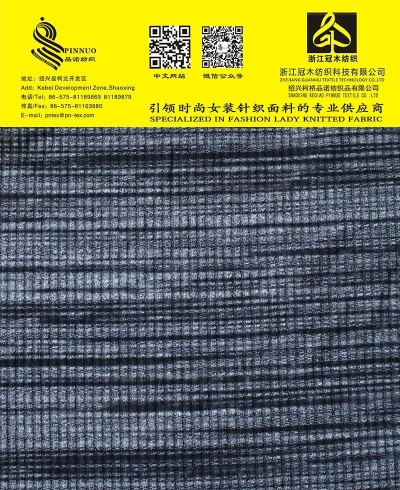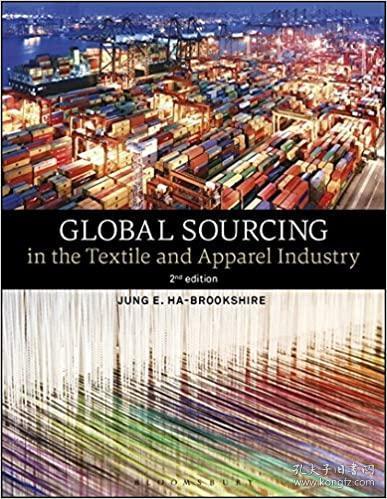The Fabrication of Waterproof Textiles:A Comprehensive Analysis
This article comprehensively analyzes the fabrication of waterproof textiles, highlighting the importance and techniques involved in achieving this crucial material. The discussion covers the various types of waterproofing methods used to protect textile products from moisture damage, including chemical treatment, physical barriers (such as laminated films or adhesives), and specialized finishes designed specifically for outdoor applications. The article also explores the challenges associated with manufacturing waterproof textiles and offers insights into potential solutions to overcome these obstacles. By providing readers with a comprehensive understanding of the process and factors that influence the quality of waterproof textiles, this article aims to inform those working in the industry on how to produce high-quality, durable protective materials that meet the demands of modern consumers.
-
Introduction to Waterproof Textiles Textiles are ubiquitous in our daily lives, with clothing, furnishings, and even electronic devices made from them. However, when it comes to outdoor activities or work environments that require protection from water, waterproof textiles become essential. These materials resist the penetration of moisture, making them ideal for use in sports wear, construction gear, and industrial machinery.
-
Types of Textiles and their Waterproofing Techniques A variety of textiles can be treated to make them waterproof. Here are some common types:
- Wool: Wool fibers contain natural waxes that help repell water. They are often treated with acrylic or silicone to improve their water-resistant properties.
- Cotton: Cotton's natural oils can act as a barrier against water penetration. However, this property can diminish after washing or exposure to high heat.
- Nylon: Although not naturally waterproof, nylon is commonly treated with acrylic or silicone to enhance its resistance to water and other liquids.
-
Manufacturing Processes for Waterproof Textiles The production process for waterproof textiles involves several steps:
- Selection of Raw Material: The first step is choosing high-quality raw materials like wool, cotton, or synthetic fibers.
- Pre-treatment: Before dying or dyeing, the fabric undergoes treatments such as scouring, cleaning, and bleaching. Some fabrics may also undergo treatments like steaming to improve their absorbency.
- Dyeing: Dyed textiles have a higher level of waterproofing due to the presence of dyes and pigments that form a protective layer on the fibers. Some dyes used include resins and polymers that create a barrier against liquid permeation.
- Finishing: After dyeing, the fabric undergoes finishing processes like printing, embroidery, or laundering to enhance its aesthetic appeal and functionality.
- Testing and Quality Control: Each stage of the manufacturing process must pass quality checks to ensure uniformity, durability, and performance.
-
Applications of Waterproof Textiles The applications of waterproof textiles are numerous:

- Outdoor Wear & Sports: Clothing made from waterproof fabrics can withstand rain, snow, and extreme temperatures. Examples include hiking jackets, ski pants, and swimwear.
- Construction Gear: Workers' clothing, safety vests, and overalls are often made from waterproof materials to protect them from spills and leaks.
- Industrial Machinery: Industries like automotive, aerospace, and marine engineering use waterproof textiles to keep machinery dry and prevent damage from water.
- Medical Supplies: Medicated garments and equipment need to be resistant to moisture, so waterproof fabrics play a critical role here.
-
Case Study: The Development of a New Waterproof Textile Let's take a look at the journey of a new waterproof textile product developed by ABC Textiles.
- Idea Generation: The team brainstormed ideas for waterproof textiles based on market demand and technological advancements.
- Product Design: They created a prototype using high-quality wool fibers and applied a special coating to enhance its water-resistance properties.
- Quality Assurance: The design underwent rigorous testing to ensure it met the standards of waterproofness and durability required by various industries.
- Market Launch: Once the product passed all tests and received positive feedback, it was launched to the market and quickly gained popularity due to its superior performance.
-
Future Trends in Waterproof Textile Technology As technology continues to evolve, future trends in waterproof textile technology will focus on:
- Greener Production Methods: Using renewable resources and reducing waste will become crucial for sustainable production.
- Enhanced Durability: To meet the needs of demanding environments, waterproof textiles will be designed to last longer and maintain their performance over time.
- Smart Integration: Smart textiles that respond to external factors like temperature, humidity, and pressure could be integrated into waterproof garments, providing users with additional comfort and convenience.
-
Conclusion Textile waterproofing is a field that continually pushes boundaries in innovation and efficiency. By understanding how different textiles are treated and applying these technologies effectively, we can create products that are not only functional but also environmentally friendly. As we continue to explore and develop, we can expect further advancements in the field of waterproof textiles, ensuring they remain relevant and beneficial in our ever-changing world.
纺织品防水厂家概述
随着全球气候变化和自然灾害频发,防水性能成为纺织品行业的重要指标,纺织品防水厂家作为专业的生产商,致力于提供高品质、高性能的防水纺织品,以满足不同领域的需求,本文将详细介绍纺织品防水厂家的特点、优势以及案例分析。
纺织品防水厂家的特点
- 专业研发团队:纺织品防水厂家拥有一支专业的研发团队,他们不断探索新技术、新材料,致力于提高防水性能和产品的稳定性。
- 严格质量控制:厂家注重产品质量,采用先进的生产设备和技术,严格把控每一个生产环节,确保产品达到国际标准。
- 环保理念:厂家注重环保,采用环保材料和生产工艺,减少对环境的影响,符合可持续发展的趋势。
纺织品防水厂家的优势

- 高品质产品:厂家生产的防水纺织品具有出色的防水性能和耐用性,能够满足各种恶劣环境下的使用需求。
- 多样化产品系列:厂家提供多种防水纺织品,包括但不限于雨衣、防水鞋、帐篷等,能够满足不同领域的需求。
- 良好的市场口碑:经过多年的发展,厂家在市场上树立了良好的口碑,赢得了客户的信任和好评。
案例分析
-
某知名纺织品防水厂家 该厂家是一家专注于纺织品防水领域的专业厂家,拥有先进的生产设备和技术,采用环保材料,该厂家生产的防水纺织品具有出色的防水性能和耐用性,广泛应用于户外运动、户外探险等领域,该厂家的产品受到了广大客户的好评,市场占有率逐年上升。
-
某地区特色纺织品防水厂家 该地区的一家纺织品防水厂家注重本地特色产品的开发,采用当地特色材料和技术,生产出具有地方特色的防水纺织品,该厂家生产的防水纺织品不仅具有防水性能,还具有独特的图案和设计,深受当地消费者的喜爱,该厂家的产品在当地市场上也取得了良好的销售业绩。
英文案例说明
在英文中,我们可以使用表格来进一步说明纺织品防水厂家的特点和优势,以下是一个英文案例表格:
英文案例说明表:
| 特点 | 优势 | 案例说明 |
|---|---|---|
| 专业研发团队 | 高品质产品、高性能的防水性能 | 该厂家拥有一支专业的研发团队,不断探索新技术、新材料,致力于提高防水性能和产品的稳定性 |
| 严格质量控制 | 国际标准 | 该厂家注重产品质量,采用先进的生产设备和技术,严格把控每一个生产环节,确保产品达到国际标准 |
| 环保理念 | 符合可持续发展趋势 | 该厂家注重环保,采用环保材料和生产工艺,减少对环境的影响 |
| 产品系列多样化 | 雨衣、防水鞋、帐篷等 | 该厂家提供多种防水纺织品,包括户外运动、户外探险等领域的产品 |
| 市场口碑良好 | 多年来市场占有率逐年上升 | 该厂家在市场上树立了良好的口碑,赢得了客户的信任和好评 |
| 地区特色产品开发 | 采用当地特色材料和技术 | 该地区的一家纺织品防水厂家注重本地特色产品的开发,采用当地特色材料和技术,生产出具有地方特色的防水纺织品 |
纺织品防水厂家作为专业的生产商,在市场上具有重要地位,他们注重产品质量、环保理念和市场口碑等方面的发展,提供高品质、高性能的防水纺织品,通过案例分析和英文案例说明,我们可以更好地了解纺织品防水厂家的特点和优势。
Articles related to the knowledge points of this article:
Mastering Photoshop for Editing Textiles A Comprehensive Guide
Patterns on Windows:A Visual Journey through Textile Design
The Fabric of Innovation:A Look at Wenzhou Huanhong Textiles
Narishima Textiles:Crafting the Perfect Blend of Quality and Style
Exploring the Future of Quality:The Story of Qianzhuang Textiles Company



